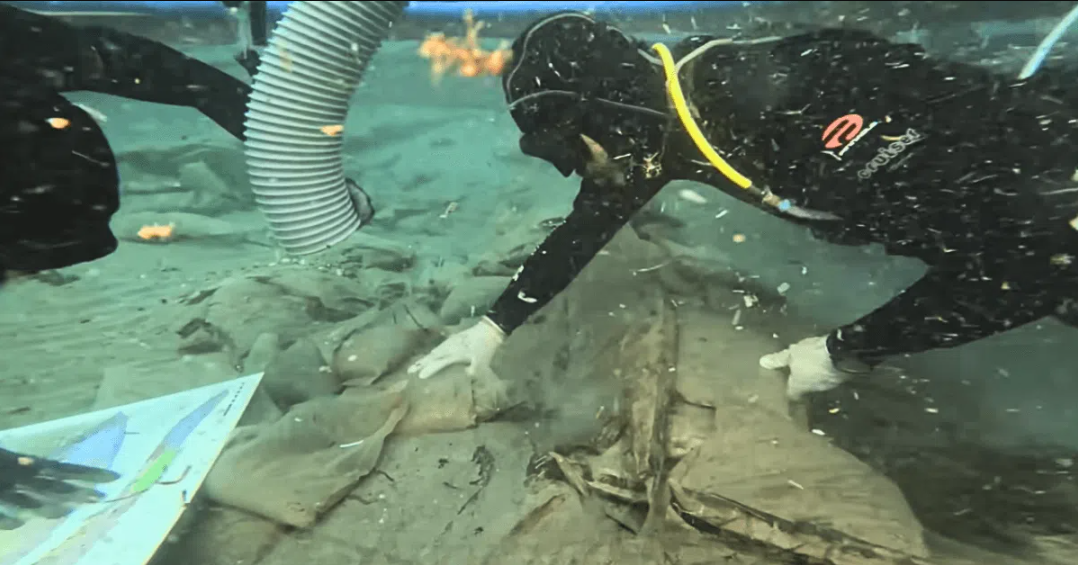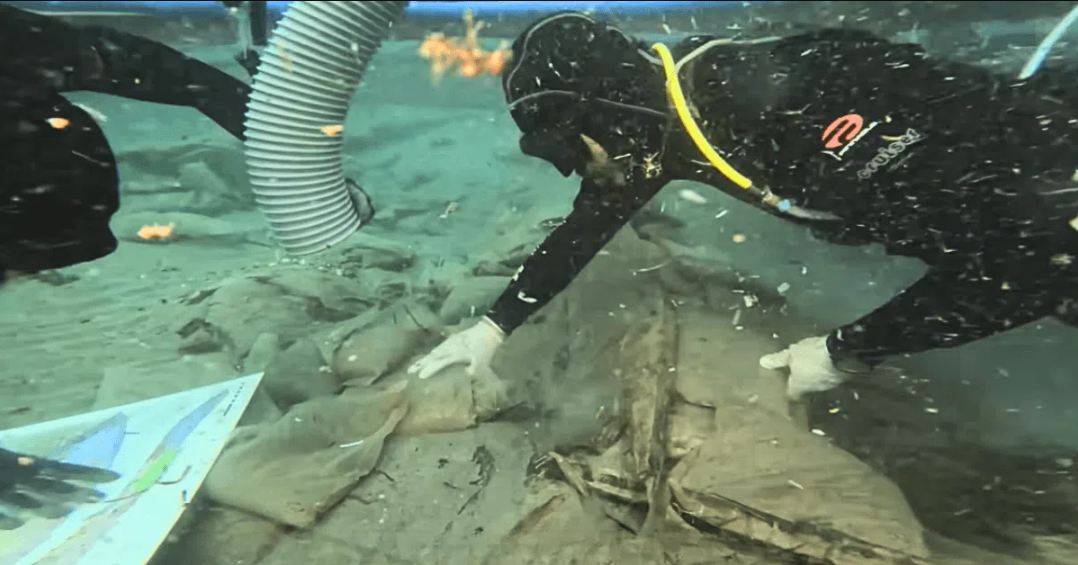
西班牙考古学家从该国东南海岸附近的水域移走了一艘2600年前的沉船,距离沉船最初被发现已经过去了20年。
这艘船的残骸可以追溯到公元前7世纪,于1994年在马扎伦镇附近的穆尔西亚海岸被发现。
考古发掘项目的负责人卡洛斯·德·胡安(Carlos de Juan)表示,考古学家对这艘古代腓尼基沉船特别感兴趣,因为它是发现的少数几艘基本完好无损的腓尼基时代沉船之一。
瓦伦西亚大学与穆尔西亚地区文化部协调开展了发掘工作。
一个由14名研究人员组成的团队与胡安一起,在不到两个月的时间里,从水中打捞沉船,该项目于9月13日开始,于11月7日结束。
腓尼基是地中海东部沿岸的一个文明,位于现在的黎巴嫩、叙利亚和以色列地区。
它存在于公元前1500年至公元前300年,尽管腓尼基人靠贸易为生,并且有一个字母表作为古希腊和罗马形成的字母表的基础,但直到20世纪,许多文明的痕迹都消失了。
这艘沉船上的文物揭示了这个文明的文化,因为与古希腊和罗马相比,人们对其海军舰艇和其他海军技术知之甚少。
因此,这个残骸对研究腓尼基人非常重要,胡安说。
沉船的每一块碎片都被带到西班牙南部水下考古博物馆的一个实验室,在那里它将被保存,这个过程将需要几年的时间。

▲Screengrab from YouTube video posted by the University of Valencia
英文原文
Spanish archaeologists removed a 2600-year-old shipwreck from waters off the nation’s southeastern coast, 20 years after the wreck was initially discovered.
The wreck dates to the 7th century B.C.E and was found in 1994 off Murcia coast near Mazarron town.
The ancient Phoenician shipwreck has been of particular interest to archaeologists as it is just one of the few Phoenician-era shipwrecks found largely intact, said Carlos de Juan, the director of the excavation project.
The University of Valencia coordinated with the regional culture ministry in Murcia to carry out the excavation.
A team of 14 researchers worked with Juan to retrieve the wreck from the waters in less than 2 months with the project starting on September 13 and ending on November 7.
Phoenicia was a civilisation along the eastern Mediterranean coast, in the region which is now Lebanon, Syria and Israel.
It existed from 1500 to 300 BCE and although the Phoenicians lived off trade and had an alphabet that was the basis for the ones formed in ancient Greece and Rome, many traces of the civilisation were lost until the 20th century.
Artefacts from this shipwreck throw light on the civilisation’s culture since so little is known about its naval ships and other naval technology compared to what is known about ancient Greece and Rome.
Hence, this wreck is quite important for studying the Phoenicians, Juan said.
Every piece of the wreck has been taken to a lab at the Museum of Underwater Archaeology in southern Spain, where it will be conserved, in a process that will take a few more years.
免责申明:本文根据CBS News等内容整理,如有误差,以英文为准;仅代表作者观点,不代表中国海员之家立场。其真实性及原创性未能得到中国海员之家证实,在此感谢原作者的辛苦创作,如转载涉及版权等问题,请作者与我们联系,我们将在第一时间处理,谢谢!联系邮箱:cnisu@54seaman.com